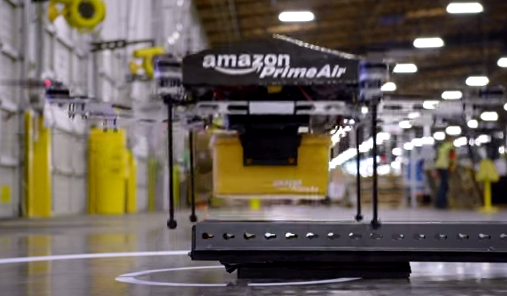Worldwide leader in online sales and home delivery, Amazon is developing autonomous, GPS coordinated, airborne delivery. Branded as Amazon Prime Air, the system uses robotic helicopters, dubbed octocopters, which at present have a range of 10 miles and a cargo capacity of five pounds. Amazon CEO Jeff Bezos hopes to have the service operational in four to five years.
A hurdle to deploying Amazon Prime Air in the United States is regulatory approval, which Bezos does not think could happen until 2015. Fortunately, Amazon is global company with 225 million customers world wide.
Developing countries will be a great market for air delivery because cell phone towers and GPS are ubiquitous. For example, a person with a cell phone and a credit card could order a product and have it delivered to them in 30 minutes, even if they lack a physical address. Only the order taking infrastructure would use the cell phone network. The octocopters track GPS satellites on their own. Rain may present some determent, but and the Seattle based Amazon has the same issue in their own backyard.
Airbourne delivery also does not suffer from the high cost of gasoline, poor highway infrastructure, collapsing bridges and constant traffic jams. The octocopters are powered by electricity and can use renewable energy sources. Amazon Prime Air would likely be faster and more efficient than motorcycle messengers that now deliver small packages throughout the central valley.
Just one Amazon fulfillment center in the free trade zone could cover a large portion of the population of Costa Rica. Within range would be Curridabat, San Pedro, downtown San Jose, Desamparados, Escazu, Santa Ana, Heredia, its suburbs and most of the northern suburbs of San Jose.
Of course the tax department would want its share of the sales (import taxes) on items sold. However, the infrastructure could be built tax free, much like the current Amazon call centers already in Costa Rica.
The profile of five pound items are already similar to small items and electronic devices shipped via air freight to Costa Rica. So, the mostly high value products would not have to depend on Costa Rica’s inadequate port infrastructure. In short, this is a concept that is closer to market than many people might initially think.
